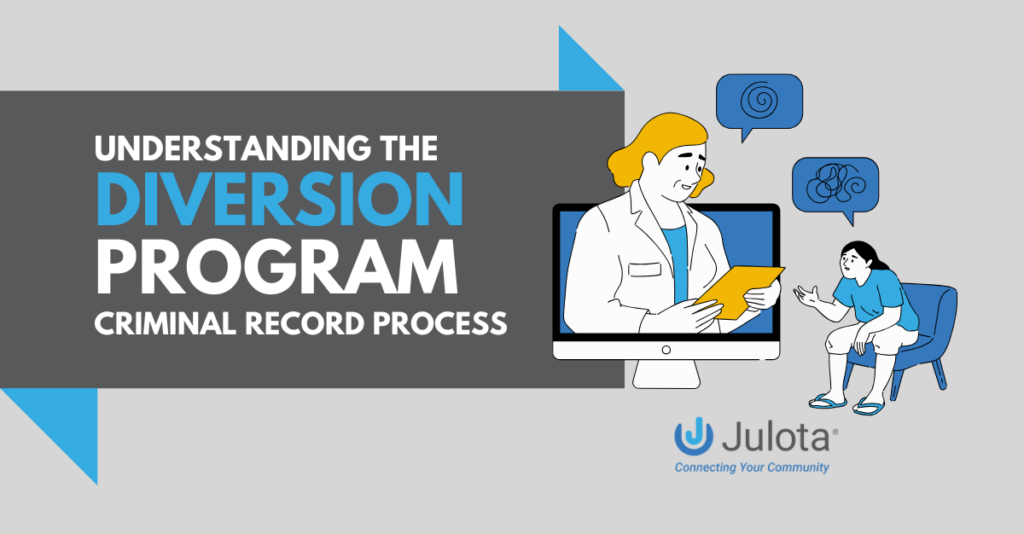The diversion program criminal record process play a pivotal role in criminal justice reform by providing pathways that help individuals address their challenges while avoiding the long-term consequences of a criminal record. For organizations operating these programs, understanding and communicating their benefits effectively is key to fostering community trust and expanding impact. Let’s explore how these programs work, their processes, and their profound effects on individuals and communities.

What is The Diversion Program Criminal Record Process?
A diversion program redirects eligible individuals away from traditional criminal proceedings, focusing instead on rehabilitation and positive change. These programs are designed to reduce recidivism, address the root causes of criminal behavior, and alleviate the burden on overtaxed court systems. Read more here for undeniable proof these programs can succeed.
Diversion programs emphasize:
- Personal growth through tailored counseling and education.
- Reducing repeat offenses by addressing underlying issues.
- Promoting community safety and well-being.
For example, Texas operates one of the largest diversion systems in the U.S., with over 200,000 participants in its deferred adjudication program in 2017, demonstrating the scale and acceptance of these initiatives.
Key Goals of Diversion Programs
- Reducing Recidivism: Studies show that diversion programs reduce future convictions by 48-75% over ten years.
- Cost Efficiency: By diverting cases from courts and correctional facilities, these programs save taxpayers significant money.
- Community Betterment: They foster safer neighborhoods, reduce systemic inequalities, and support participants in building stable futures.
The Impact of Diversion Programs on Criminal Records
A critical feature of diversion programs is their impact on participants’ criminal records. Successful completion typically leads to the dismissal of charges, avoiding the stigma and limitations of a conviction.
How Participation Affects Criminal Records
- No Conviction Recorded: Charges are paused during program participation and dismissed upon successful completion.
- Potential for Record Sealing: In many jurisdictions, records of the initial arrest and charges can be sealed or expunged, further protecting participants from future discrimination.
For organizations, this underscores the importance of educating stakeholders and participants about the long-term benefits of successful program completion.
Background Checks Post-Diversion
While the specifics vary by state and program:
- Basic checks may show initial arrests, but charge dismissal may also be noted.
- Comprehensive checks for security-sensitive roles might include program participation details.
Programs should provide clear guidance on sealing or expunging records to help participants fully realize the benefits of diversion.
Implementing a Successful Diversion Program
Eligibility and Screening
Eligibility criteria often focus on first-time offenders charged with non-violent misdemeanors. Programs should develop clear protocols to assess:
- The participant’s criminal history.
- Their willingness to engage in rehabilitation efforts.
- The nature and context of the offense.
Structured Processes
A well-designed diversion program includes:
- Initial Assessment: Tailored evaluations identify participants’ needs and risk factors.
- Customized Plans: Programs such as substance abuse treatment, mental health counseling, or vocational training address specific issues.
- Ongoing Monitoring: Regular check-ins ensure accountability and progress.
- Completion Review: Participants’ adherence to requirements is thoroughly assessed before the dismissal of charges.
Common Requirements for Participants
- Attending therapy or counseling.
- Completing community service.
- Maintaining employment or education.
- Passing regular drug or alcohol screenings.
Community and Systemic Benefits
Diversion programs not only transform individual lives but also strengthen communities. Organizations running these programs can highlight outcomes such as:
- Increased Employment Opportunities: Participants are 50-53% more likely to secure long-term employment post-completion.
- Reduced Racial Disparities: Programs have successfully addressed systemic inequities, particularly for marginalized populations.
- Safer Communities: As seen in Harris County, Texas, increased diversion program use led to fewer average convictions per participant, directly contributing to community safety.
Specialized Diversion Initiatives
Programs for Youth
Youth-focused diversion programs are particularly effective, reducing recidivism by up to 10% compared to traditional prosecution. These programs often include mentorship, educational support, and life skills training to help young participants navigate challenges. Read this guide on how diversion programs help keep youth out of the justice system.
Offense-Specific Programs
Tailored approaches for offenses such as drug-related crimes or property offenses are critical. Drug diversion programs, for instance, integrate:
- Substance abuse treatment.
- Educational workshops on addiction.
- Support group participation.
Addressing Variations Across States
Diversion program processes and eligibility criteria differ widely. Organizations should:
- Develop resources to educate participants about local requirements.
- Advocate for policy improvements to expand access and consistency.
- Build partnerships with legal and social service professionals to streamline processes.
Final Thoughts on The Diversion Program Criminal Record Process
Operating a diversion program is a significant responsibility, requiring a balance of structure, empathy, and data-driven insights. By focusing on the holistic development of participants and aligning efforts with community goals, diversion programs can:
- Reduce the burden on the criminal justice system.
- Enhance public safety.
- Provide individuals with the tools to lead productive lives free of criminal records.
Incorporating best practices, fostering collaboration, and continuously evaluating outcomes will ensure these programs remain indispensable to criminal justice reform.